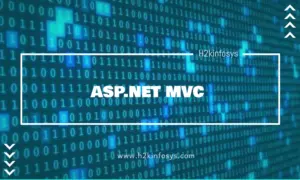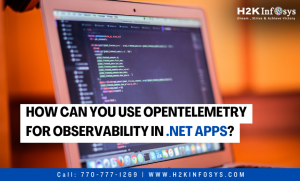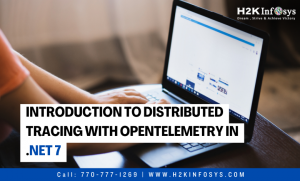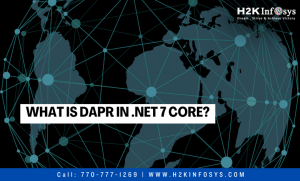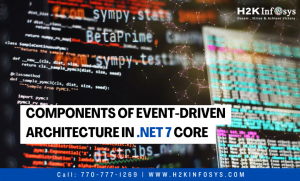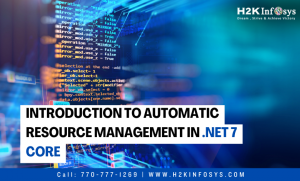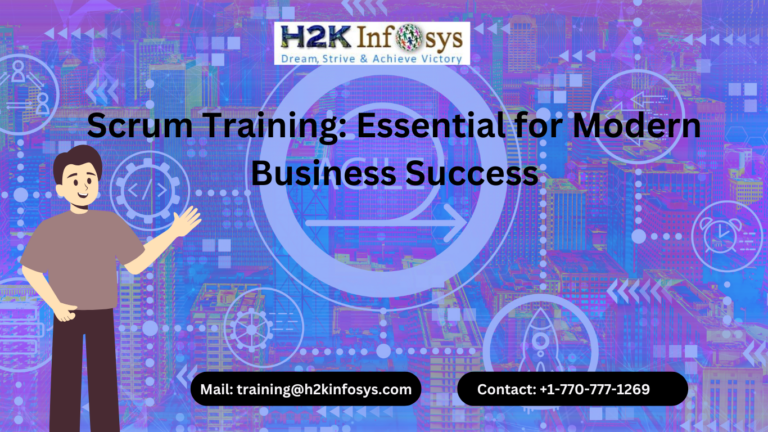Businesses nowadays must be able to handle growing volumes of data in a quick, dependable, and efficient manner. Using event-driven architecture (EDA) is becoming a more and more common way for businesses to handle large, complicated data streams instantly. There’s a compelling reason why event-driven .NET architecture has grown more popular recently in the field of software development.
The ability of developers to swiftly and effectively design event-driven apps is becoming more and more crucial in the current digital era. The Distributed Application Runtime is one piece of technology that’s making this possible (Dapr). This open-source framework is the perfect tool for creating contemporary cloud-native applications because it lets developers create serverless and microservice apps with any language and runtime. Check out the online .NET training to learn more.
From a Traditional Request-Response Model to an Event-Driven .NET Core Approach
The following are some of the difficulties that modern web applications face:
- Availability: The state of being up and running and ready to handle incoming requests for one or more services.
- Scalability: The capacity of the program to fulfil requests by launching new instances of the program
- Synchronous model: The web server gets an HTTP request from the client, which then has to wait for a response.
The request-response technique is the conventional communication pattern found in the majority of web applications. In this approach, the web server receives synchronous HTTP requests from the client, which are followed by waits for a response. Another application of the request-response concept is in microservices architectures. Eventually, a synchronous chain or sequence of HTTP requests and responses is created.
Now, suppose that a response timests in the chain that is awaiting a response times out due to the web server not responding to it. Your application either stops working or gets blocked as a result. A breakdown of one system will affect the other systems as well because synchronous HTTP requests and replies increase with the number of services.
What Are Events and Notifications?
An event is defined as a substantial change in state that has the potential to initiate an action in the content of an event-driven application. For instance, a user fills out a login form with their login information and clicks the Login button. An event takes place when a user does an action, such as pressing a key or clicking a button. When an event happens, the program waits for it and then launches the relevant handler. Any task, including altering the application’s state, can be completed by the handler.
An event possesses the following qualities:
- It acts as proof that something happened.
- It’s lightweight, distributed, and encapsulates a change of state.
- It can be disseminated through texting and streaming services.
- It cannot be changed or eliminated since it is immutable.
- It has an endless shelf life.
- An event consumer may consume it as many times as they choose.
An email sent, a new record added to the database, or any other event within the application is communicated by means of a notification. This usually includes an identification, the specifics of the event, and the context) the time, date, place, etc. (of the event. This metadata allows an event consumer to decide whether or not to process the event.
Event Schema
An event record is defined using a certain format, to which is known as an event customers need to be familiar with this format in order to access one or more event records, even though producers publish data that adhere to this schema.
Event-Driven .NET Core Architecture
A software architectural pattern known as event-driven architecture is characterised by a collection of disjointed components that can asynchronously publish and subscribe to events through the use of an event broker. Event-driven systems can be message-based and asynchronous, and they can generate, recognize, consume, and react to events. Microservices and other loosely linked applications are well suited for an event-driven design.
Benefits and Downsides
The principal benefits of an event-driven architecture encompass heightened agility, scalability, and responsiveness. Enhancing corporate procedures and customer experiences instantaneously can be achieved by integrating additional services and analytics and reacting to real-time information. The majority of businesses think that updating IT infrastructure is more advantageous than paying extra for event-driven architecture.
Because event producers and consumers are not linked, the availability of one service is not impacted by the failure of another under an event-driven architecture. Thus, producers can continue to generate event signals even in the absence of consumers. Similarly, a customer waits for fresh event messages to become available, but they are unaffected if the producer is unavailable.
Event-driven .NET Core architecture provides several benefits:
- Loose coupling
- Immutability
- Independent failure
- Scalability
However, there are certain downsides to using event-driven architecture:
- Increased complexity
- Difficulty in monitoring
- Difficulty in debugging and troubleshooting
Conclusion
To learn more about Event-Driven Application, check out the .NET online course.










